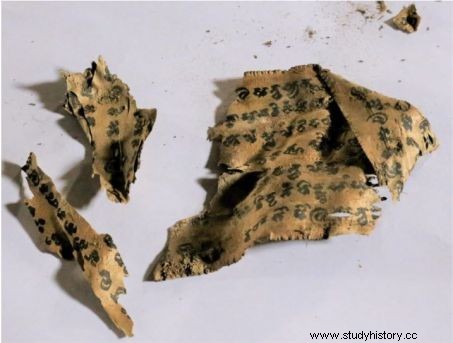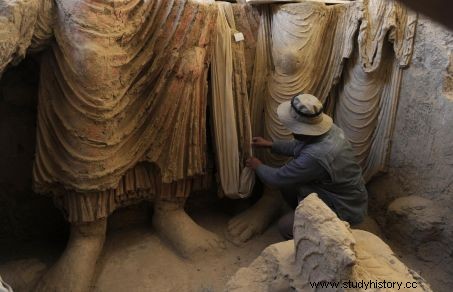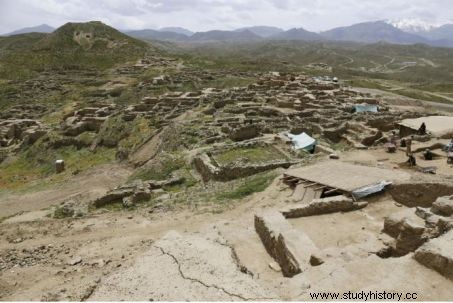Seventh th Buddhist writings century have just been discovered in the mountains of Afghanistan.

Statue of a Buddha from the 7th century century discovered at the archaeological site of Més Aynak, south of Kabul, Afghanistan.
Before becoming a land of Islam, from the conquest of the Umayyad dynasty in the VII-VIII e century, Afghanistan was a Buddhist land… Since the III th century, many monasteries covered its territory, where giant Buddhas nested in the red sandstone cliffs, in Bamiyan, a unique heritage destroyed in 2001 by the Taliban. Among the vestiges dating back to this period, some remains of Sanskrit manuscripts sometimes emerge from the sands, under the delicate brush of archaeologists. What recently happened on the famous site of Mes Aynak, in the province of Logar, about forty kilometers southeast of Kabul, the capital. A Japanese news article has just revealed that fragments of sutras calligraphy on thin birch bark (treaties and canonical texts) dated to the 7th th century were unearthed by teams from the Afghan Institute of Archeology, in the former Buddhist settlement.

Sanskrit manuscript fragments on birch bark. © Nikkei
In 2009, the Afghan government began large-scale excavations of the hill of Més Aynak, at an altitude of 2500m, a grandiose Greco-Buddhist* complex occupied between the III th and the VII th century, from which religious buildings are regularly freed from their clay gangue, but above all extraordinary relics of statues or mural paintings in raw clay, from the Kushan period (II th -III e century of our era).

Greek-Buddhist statues discovered at the Mes Aynak site. Very fragile, most were transported to the Kabul museum. © Shah Marai / AFP
According to specialists, the site could have been the city described by the Chinese Buddhist monk of the VII th century, Xuanzang (602-664), to whom we owe the Report of the journey to the West at the time of the Great Tangs , a remarkable story he told in the 7th century century of his trip to India and the countries he crossed. A relationship that inspired one of the greatest classics of Chinese literature, the "Journey to the West" or "Journey to the West" . "These discoveries are a good illustration of the richness of this site, both a great Buddhist center and a vast copper mine ", recalled, cooperating in this work, Philippe Marquis, current director of the French Archaeological Delegation in Afghanistan (DAFA), joined in Ashgabad (Turkmenistan), by Sciences et Avenir.

General view of the site of Mes Aynak, in the province of Logar. © Nikkei
A site under threat from a copper mine
The project to exploit the Més Aynak copper mine, the world's second largest copper reserve, threatened the ancient Buddhist establishment. It was bought for $3 billion from the Afghan state in 2008 by a Chinese company**. But in Kabul, on July 13 and 14, 2019, during a seminar devoted to Més Aynak, if a renegotiation of the mining agreement by the Afghan and Chinese authorities continued to be mentioned, the maintenance of archaeological research was clearly confirmed. . Knowing that no economically viable mining operation could be envisaged until the necessary infrastructures were put in place - which is far from being the case - it seems that another good ten years will pass. before copper was extracted from Més Aynak…
This reassured the researchers. The Afghan Institute of Archeology took the opportunity to declare that it would take another few decades to complete the study of the entire deposit. A reprieve that scientists are quick to take advantage of to save all its treasures. After restoration, analyzes will be carried out on the new manuscript to proceed with its complete decryption.
*Greco-Buddhist (or Gandhara) art was born of the cultural encounter between East and West, in the wake of the conquests of Alexander the Great, in the 4 th century before our era.
**China Metallurgical Group Corporation (MCC)-Jianxi Copper Consortium.
